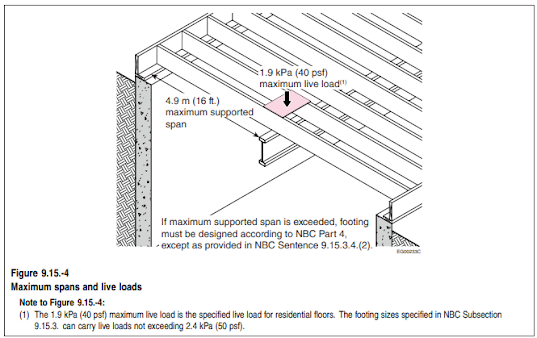Window openings in foundation wall
Ask Bing Safety Codes Consultant Ltd.
Affordable, fast and accurate! Ask Bing -- The Building Code Consultant and Mentor with experience of code enforcement (12 years in the City of Calgary as Plans Examiner and Safety Codes Officer Engineer, 1 year in the City of Saskatoon as Senior Building Code Engineer, reviewed and approved more than 4000 projects), aims to help building designers and owners saving TIME and MONEY.
Wednesday, May 15, 2024
Thursday, May 9, 2024
How are plans reviewed? -- #18
How are plans reviewed? -- #18
How did you find a designer for your tenant space alteration? Had you been considering hiring a code expert to help you saving time and money?
I was a professional plans examiner in the City of Calgary. I reviewed and approved more than 8000 #projects in the past 12 years. I found one fact that more than 50% of the building permit #plans have to be on hold after the preliminary review. Some of them are on hold for more than one year to get approved. The main reason for this kind of delay is that the designers have difficulties to understand the building code requirements.
Unfortunately, as business or building #owners, they don't have any idea of which designer is the best for their job. Their might pick one from the yellow pages randomly or be attracted by one with fancy name or website. It is really hard to avoid a disastrous result.
Another fact I found is that up to 80% of projects, including interior renovations, #additions and new #buildings have the space to save at least 20% of the construction #cost. Thinking about an unnecessary fire separation, the cost can be saved is more than 50% of that wall. If you can use #wood studs instead of #steel studs for your #partitions, you can save more than 40% of the studs cost.
One example I have reviewed recently is a six storey new building. It was designed as a #noncombustible building. I found if we could make the grade 600mm higher, the whole building can be built as #combustible building. The cost saving is more than a million.
One of the extreme projects I found is a primary #school building. The Building area is more than 3000sqm. The cost of the building is more than 30 million. It should be built as noncombustible building as per the building code, but it is actually built with combustible materials. What a danger to the school kids and what a waste of the money!
I hope this question is helpful when you plan to hire a designer for your next project. No matter which designer you are going to hire, it will be beneficial to have a Building Code expert to back you up. At least, we might know if you have to avoid that designer for your project. 😁
#plansexaminer #buildingpermit #preliminaryreview #buildingcode #fireseparation #primaryschool #Buildingarea
Tuesday, May 7, 2024
9.15.4.3. Foundation Walls Considered to be Laterally Supported at the Top
9.15.4.3. Foundation Walls Considered to be Laterally Supported at the Top
Thursday, May 2, 2024
Footing Thickness
9.15.3.8. Footing Thickness
Friday, April 26, 2024
Flat ICF walls
Flat ICF walls
Friday, April 19, 2024
9.15.4. Foundation Walls
9.15.4. Foundation Walls
Tuesday, April 16, 2024
9.15.3.4. Basic Footing Widths and Areas
9.15.3.4. Basic Footing Widths and Areas
Saturday, March 16, 2024
9.10.13.13. Fire Dampers
9.10.13.13. Fire Dampers
Saturday, February 24, 2024
Structural Considerations
Structural Considerations
Sunday, January 28, 2024
Common strategies used to direct water away from building foundations
Common strategies used to direct water away from building foundations
Window openings in foundation wall Window openings in a #foundation wall weaken the ability of the wall to resist inward #pressures. Any h...

-
Quiz There are serious code issues in the following picture. How many can you tell based on the description below? It was one of the Winne...
-
3. 8.5.2. Physician Clinics and Offices (NEW) 1) Every doorway that is located in a barrier-free path of travel to a physician clinic or of...
-
Common strategies used to direct water away from building foundations #Rainwater and #snow-melt that do not drain away from a #foundation ...










